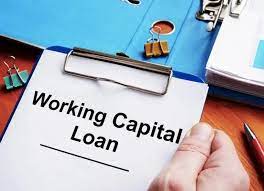Whether you’re a contractor or run a retail store, you’ve certainly needed small loan capital on a short-term basis. Because there are things that require your immediate financial attention. The question of how to get that small business working capital loan becomes pivotal. So sit as we discuss working capital loans in full.
Working Capital Loans
Working capital loans are a loan that businesses can take to finance their everyday operations. Instead of buying long-term assets or investments, these loans provide working capital to cover businesses’ short-term operational needs.
A working capital loan is a loan to fund a business’s day-to-day operations. These loans are to provide working capital to fulfill a company’s short-term operating demands.
Payroll, rent, and debt payments are examples of such expenses. Working capital loans are essentially corporate debt borrowings that a company uses to fund its day-to-day operations.
Working Capital Loans Overview
Sometimes a company does not have adequate cash on hand or asset liquidity to cover day-to-day operational expenses and, thus, will secure a loan for this purpose. Companies with high seasonality or cyclical sales may rely on working capital loans to help with periods of reduced business activity.
Many businesses do not have consistent or predictable revenue year after year. Manufacturing firms, for example, may experience cyclical sales that correlate to store demands. During the fourth quarter that is, during the holiday season most shops sell more stuff than at any other time of the year.
Manufacturers normally conduct the majority of their production activity throughout the summer months. Preparing stockpiles for the fourth-quarter push, in order to supply shops with the right amount of goods. Then, as the end of the year approaches, merchants reduce manufacturing purchases in order to sell off their inventory, resulting in lower manufacturing sales.
Manufacturers with this kind of seasonality frequently need a working capital loan to cover wages. And other operating expenses during the fourth quarter are a down season. The loan is usually repaid by the time the business reaches its peak season and no longer needs it.
Working Capital Loans For Small Business
Working capital loans are a perfect way for business owners who need flexible, short-term funding to grow their businesses. They do so without having to make tough decisions as to how they should allocate funds. With shorter payment periods and flexible usage, Credibly’s working capital solutions provide speed, simplicity, and versatility to meet the funding needs of small businesses. Funds are automatically deposited into your business bank account with repayments already set up. So, you can focus on running your company.
Types of Working Capital Loans
In an ideal environment, you’d be able to expand working capital by simply increasing sales. Unfortunately, not every organization operates in this manner.
Working capital is a fickle beast for many small businesses, especially those that operate seasonally. As a result, many small firms are forced to think creatively. Applying for working capital loans is one option.
#1. Short-Term Loans
Business capital in the form of a short-term business loan is the most common type of working capital loan. With short-term loans, you’re given a lump sum of money that’s paid back with interest over three to 18 months.
#2. Working Capital Lines of Credit
A working capital line of credit allows you to dip into a pool of funds as needed. You only have to pay interest on the money you actually use.
A line of credit is a great alternative for business owners who wish to set up an emergency fund because the money is available if and when you need it most.
#3. Merchant Cash Advances
Merchant cash advances are another type of working capital loan (MCAs). MCA businesses advance your money in this situation, which you repay by allowing them to take a fixed percentage of your daily credit card sales.
Although merchant cash advances are a convenient source of working capital, they are often quite costly.
#4. Invoice Financing
Due to late payments and unpaid bills, small firms frequently run out of working cash. As a result, invoice finance is a viable option for business owners that have overdue bills tying up their cash flow.
Invoice finance allows you to exchange unpaid invoices for working capital, freeing up cash for your company’s day-to-day operations.
#5. SBA Loans
An SBA loan is a low-interest business loan backed by the Small Business Administration of the United States. The SBA 7(a) loan is very useful for working capital, as it provides up to $5 million in funding for business uses.
Working Capital Loans for Small Business
#1. LoanBuilder, a PayPal Service
Small business owners can use LoanBuilder, a PayPal tool, to get short-term working capital loans ranging from $5,000 to $500,000. These short-term loans come in the form of a single lump sum that you’ll repay, plus interest, over a time as little as 13 weeks or as long as 52 weeks with weekly payments.
Interest is calculated as a proportion of the loan amount, with rates ranging from 2.9 percent to 18.72 percent. If you have a $100,000 loan with a 5% interest rate, for example, you will pay $5,000 in interest. You’ll need at least nine months of business experience, $42,000 in yearly revenue, and a 620 credit score business owner to qualify for LoanBuilder.
Best for: Entrepreneurs who require working financing and are willing to accept relatively short repayment terms.
#2. Kabbage Funding
You can get a working capital line of credit from Kabbage Funding for $2,000 to $250,000. The repayment period is six, twelve, or eighteen months. Unlike other lenders, Kabbage Funding uses many sources of information to establish your creditworthiness rather than depending solely on your credit score or past.
They require $50,000 in annual income and one year of business experience, but no minimum credit score is required. Kabbage Funding charges a monthly fee ranging from 1.5 percent to 10% on their line of credit.
Best for: Small business owners with poor credit who require a readily available line of credit for working capital.
#3. OnDeck
For small businesses, OnDeck offers a variety of working capital lending solutions, including short-term loans and company lines of credit. Their working capital loans vary from $5,000 to $500,000, and approval can take as little as 24 hours.
OnDeck’s working capital loan fees are determined by your credit score, cash flow scenario, and whether or not you’ve borrowed with them before. Interest rates start at 9.99 percent per year. To qualify, you must have been in the company for at least one year. Have a credit score of 600, and generate $100,000 in yearly revenue.
Best for: Businesses with a little more revenue that are already established.
#4. BlueVine
Working capital from BlueVine might be in the form of a business line of credit or invoice finance.
Although invoice finance provides a one-time advance for your company’s outstanding invoices, a line of credit allows you to take out revolving credit and repay it over time.
The conditions of BlueVine’s working capital loans may differ depending on which of the two you choose, but either way, they’ll be a good method to get short-term funding to boost your small business’s working capital.
Best for: Entrepreneurs who have money locked up in unpaid invoices and need quick access to cash.
#5. Credibly
Credibly, an alternative lender offers a short-term working capital loan in quantities ranging from $5,000 to $400,000. The repayment period varies between six and eighteen months.
Apart from their working capital loans, Credibly features a quick, online application process and can finance applications the same day they are submitted. Most consumers, on the other hand, will receive payments in three to five days on average.
Furthermore, while Credibly’s interest rates are comparable to those offered by other lenders, it does offer prepayment bonuses for paying off your loan early.
You’ll need $15,000 in monthly income, a 500 credit score, and six months in operation to qualify for one of these working capital loans.
Best for Startup working capital loans; business owners with bad credit who require working money.
#6. American Express Merchant Financing
Finally, Amex offers working capital loans to businesses that accept American Express credit card transactions from clients through American Express Merchant Financing. You’ll receive a large sum of cash from Amex ranging from $5,000 to $2 million, which you’ll repay, plus a fixed charge, through a percentage of your credit and debit card purchases.
The fees associated with this merchant financing could be as low as 1.75 percent of your loan amount or as high as 28 percent of your loan amount, therefore the affordability of this working capital loan varies.
Best for: Entrepreneurs who accept American Express credit cards and require a significant lump sum loan to fund working capital.
What is a Good Interest Rate on a Working Capital Loan?
The interest rates that are attached to loans for working capital can vary significantly depending on the type of financing, the lender, and the personal and corporate credit profiles of the borrower. Though, the rates can be anywhere from 3% to 99%, depending on the lender, loan terms, and applicant criteria. In general, however, rates can range anywhere from 3% to 99%.
When Should a Business Get a Working Capital Loan?
When you are in need of extra money to assist take your business through a sluggish season or when you are wanting to expand, you should consider getting a working capital loan. Rather than using the cash to invest in new machinery or property, a company may choose to investigate the possibility of obtaining a loan for working capital in order to gain access to additional funds for the purpose of covering operating expenses.
Can I Get a Business Loan with a 500 Credit Score?
When determining whether or not you are eligible for financing, a potential lender can place a greater emphasis on your personal credit history if your company is still in its early stages. The majority of lenders who provide business loans to borrowers with poor credit want a credit score of at least 500. However, if you decide to go the route of a negative credit business loan, you should get ready to pay a hefty interest rate to the lender.
What is the Minimum Credit Score for a Business Loan?
Obtain a loan after demonstrating your ability to make payments, even if your score is lower than 650. Scores below 650 are not ideal and might be categorized as either average, fair, or even poor depending on the context. You might even find that your lender wants a CIBIL score of 650 or more as the bare minimum for applications for business loans. This is something to keep in mind.
How Hard is it to Get Approved for a Small Business Loan?
When asking for a loan, the level of difficulty that a small business encounters are dependent on a number of criteria. These considerations include the company’s cash flow, length of time in business, credit score, business strategy, and the amount of the loan that is wanted. The more evidence a small company can provide to show that it can successfully pay back the loan, the simpler it will be for the company to be approved for financing.
Working capital loans for bad credit
We shall consider the types of working capital loans for bad credit.
#1. Alternative Loans:
Loans provided by the institutional, marketplace, and fintech lenders are meant to help fill the void left by banks that refuse to lend to qualified small businesses that have great cash flow and a history of profitability.
#2. Asset-Based Loans:
A type of financing that is completed by using assets on a company’s balance sheet as collateral for the loan. Types of assets used as collateral for asset-based financing include accounts receivable, inventory, real estate, equipment, and machinery.
#3. Working Capital Using Real Estate:
If a company is in need of working capital but either has poor credit or may lack recent profitability, an option could be to use your business or personal real estate (buildings and land) as collateral to obtain operating capital.
#4. Merchant Cash Advance:
An MCA loan is a way for companies that process credit cards to sell a portion of those credit card transactions to a third party at a discount, in exchange for an immediate cash payment to the small business. After the financing is provided, the merchant will then repay the funder each day by having a percentage of their credit card sales withheld and given to the funder until the cash advance is repaid.
#5. Business Cash Advance:
This type of small business financing is very similar to the merchant cash advance in that they are both the sale of a small business’s future receivables at a discount. What makes a business cash advance different from an MCA is the way that its repaid (which is done by having a set amount deducted by ACH each business day by the funder until the cash advance is fully repaid).
When is a working capital loan a good idea?
When your company requires cash to meet day-to-day operating expenses, working capital borrowing may be a wise decision. Landscapers, ski resorts, and stores, for example, may be able to use the loans to help them survive a slump in sales.
Because this is a short-term loan to address a momentary snag, it isn’t the greatest option for business expansion or long-term investment funding. Consider a long-term business loan instead if you need to borrow for those reasons.
How Do You Qualify for a Working Capital Loan?
A personal credit score of at least 530 is required for business owners to be eligible for a working capital loan through an online lender; however, a score of at least 600 is recommended, especially for traditional banks and lenders.
The length of time an applicant’s company has been operational is another factor that lenders consider, in addition to the applicant’s company’s financial records and business plan. As a result of this, applicants are typically required to provide at least two years’ worth of tax returns and at least 12 months’ worth of bank statements for both their personal and business finances as part of the application process.
How Do You Get a Working Capital Loan?
A range of lenders, including online lenders, banks, and credit unions, offer working capital loans. Banks and credit unions are good options for established firms with good credit and collateral, while online lenders can help borrowers with bad credit.
APRs charged by online or alternative lenders are often greater than those charged by banks and credit unions.
FAQ
Are working capital loans a good idea?
Working capital loans can help you address short-term financial needs. This is best used when you find yourself in a financial crunch and need an extra boost to stabilize your cash flow.
Is cash credit a working capital loan?
Cash credit or bank overdraft is the most useful and appropriate type of working capital financing extensively used by all small and big businesses.
What are the 4 main components of working capital?
The elements of working capital are money coming in, money going out, and the management of inventory.






